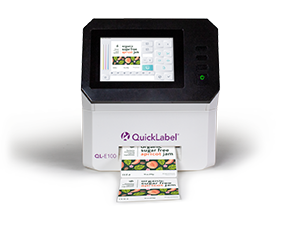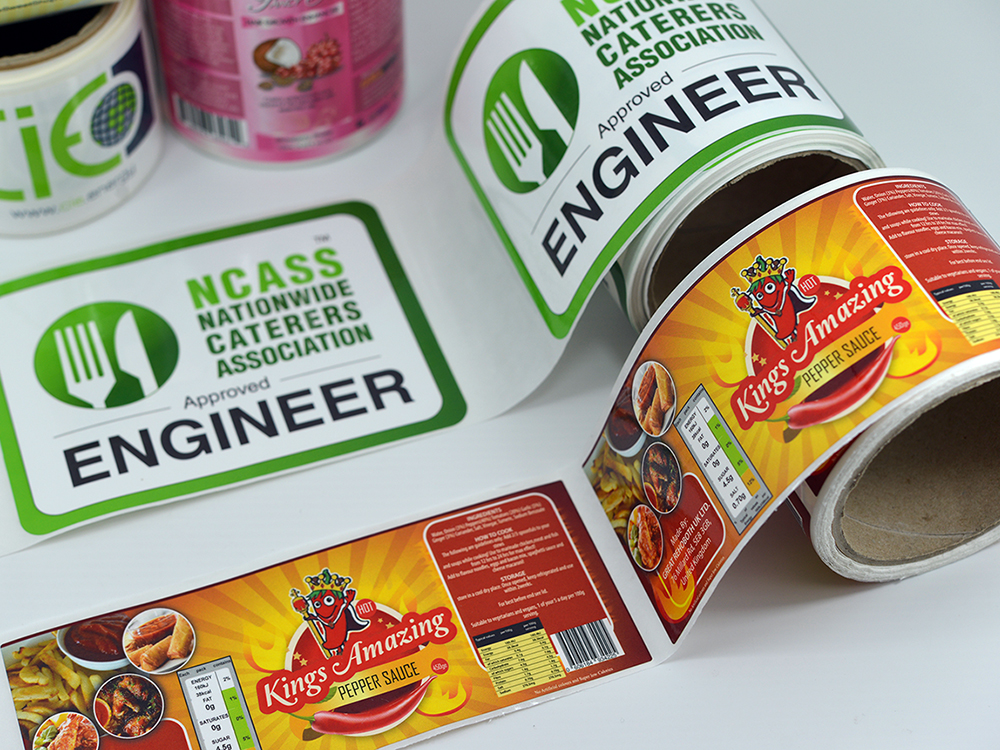Peel-and-stick blank labels for quick changes.
Peel-and-stick blank labels for quick changes.
Blog Article
Exploring the Perks of Blank Labels and Their Compatibility With Full-Colour Labels
Space labels, typically overlooked, hold a secret prowess in the world of advertising and item monitoring. Combined with full-colour tags, they can enhance product identification, stock monitoring, and advertising and marketing performance. Intriguingly, the mix of blank and full-colour tags can promote an unique aesthetic that promotes differentiation and clearness in an affordable market.
Recognizing the Basic Concept of Blank Labels
While they might appear straightforward in the beginning look, blank labels hold a considerable location in different markets. They develop the structure of item recognition, stock administration, and quality assurance. These relatively harmless tools of communication are, actually, giants of details.

Their blank nature gives them a global application, all set to be tailor-maked according to the customer's requirements. They can be printed on utilizing various methods like thermal transfer, straight thermal, laser, or inkjet, therefore making them flexible.
Different shapes and sizes cater to the myriad demands of markets, ranging from the small round tags on pharmaceutical vials to huge rectangle-shaped ones on shipping crates. Hence, blank labels, in their simplicity, carry out important features that maintain markets running smoothly.
The Exceptional Flexibility of Space Labels
Space labels, in their humble existence, embody an unmatched adaptability that sets them apart - barcode printers. This convenience depends on their capability to be used across myriad applications and industries. From retail and logistics to drugs, they work as an adaptable yet robust device in managing, arranging, and recognizing products
Their customisability is one more remarkable aspect, supporting a variety of printing technologies. Whether it's thermal, laser, or inkjet printing, blank tags can suit different approaches, catering to particular needs.
Moreover, they can be tailored to different forms, sizes, and products, showing a flexibility that surpasses the common constraints of pre-printed tags. This enables on-demand printing, supplying organizations with the freedom to style and print labels as required.
Essentially, the adaptability of empty tags originates from their simpleness, flexibility, and compatibility with varied printing innovations and products. It's these top qualities that make them an important possession in many fields.
Cost-Effectiveness: A Key Advantage of Blank Labels
One significant advantage of blank labels is their cost-effectiveness. This can be appreciated in several methods, such as the reduction in printing costs, the cost savings made from bulk purchases, and the minimization of waste generation. Each of these aspects adds to making blank tags an economical selection for organizations.
Lowering Printing Expenditures
A significant majority of businesses are constantly looking for means to reduce their functional prices. One efficient technique is by decreasing printing expenses via making use of blank labels. Unlike pre-printed tags, blank tags remove the demand for pricey color printing, thus minimizing the ink cost. Businesses can conveniently print the called for info on-demand using much less pricey mono printers. In addition, empty labels give adaptability, enabling modifications to the information printed without incurring any additional expenses. In situations where modifications occur regularly, such as rate modifications or transforming item info, this can result in considerable savings. Therefore, the consolidation of empty tags can be a calculated decision for services intending to improve cost-effectiveness and performance in their operations.

Mass Purchase Cost Savings
Many organizations discover that buying empty tags in mass can lead to considerable savings, even more boosting their cost-effectiveness. The reasoning behind this is simple; providers commonly provide rate breaks for bigger orders, reducing the unit cost of each label. This, consequently, lowers the general expense on tags, leading to higher profit margins. Additionally, having a huge supply of labels available minimizes the regularity of reordering, conserving both time and management expenses. Moreover, bulk acquiring can likewise make sure a consistent supply, stopping any type of possible interruptions in production because of lack of labels. Nevertheless, companies should balance these advantages versus storage restrictions, as huge amounts of tags need significant storage space.
Reducing Waste Generation
By permitting individuals to print only what is required, blank tags eliminate the excess usually connected with pre-printed labels. In addition, empty tags' versatility permits for final adjustments or updates without the demand to throw out obsolete or wrong labels, additionally reducing waste production. Therefore, the use of blank labels not just proves affordable but also aligns with sustainable and responsible business methods.
Exactly How Blank Labels Enhance Branding Opportunities
The role of empty tags in improving branding opportunities can not be underestimated. By offering flexibility in layout selections, they enable services to craft distinct, engaging visuals that mirror their brand name identity. Equally vital is the function these labels play in increasing brand visibility, working as a consistent pointer of business to customers.
Versatility in Layout Selections
Using an unparalleled degree of flexibility, empty labels existing organizations with countless opportunities for personalizing their product packaging. They can be developed with any logo, message, or graphic and can be published in any colour, permitting companies to customize their labels to their specific brand name identity. With the capability to change styles quickly and cost-effectively, companies can reply to market patterns and consumer feedback. This flexibility also enables seasonal product packaging variations or advertising campaigns. Space labels, then, are not simply a functional need, yet a tactical device for business branding. Utilized smartly, they can capture client attention, interact brand name worths, and distinguish items in a jampacked marketplace (blank labels). They are a testimony to the power and potential of versatile layout choices.
Maximising Brand Exposure
To maximise brand exposure, blank labels act as an extremely efficient tool. They provide a canvas for imagination, allowing a company to execute custom-made layouts that record its unique identity. This flexibility ensures the brand name is not constrained to pre-made design templates, thus providing an opportunity to stand out in the jampacked market. Empty tags can be utilised across different item lines, keeping consistency in brand discussion. In combination with full-colour labels, they produce a striking visual comparison that grabs customer focus. visit this web-site This strategy boosts recognition and recall, important aspects of brand name exposure. By leveraging the potential of empty labels, companies can substantially intensify their brand's market existence.
The Symbiotic Partnership Between Space and Full-Colour Labels
Although varying in their use, empty and full-colour labels have a distinct, symbiotic connection that boosts their private value. you can find out more Blank labels, with their minimalist style, offer versatility and adaptability, making them ideal for various applications. Their simpleness enables customisation, giving a canvas for creativity and personalisation.
Their impact is enhanced when combined with blank tags. The empty tags can soak up and reduce the effects of the strength of full-colour labels, preventing them from frustrating the customer's senses. Simultaneously, the full-colour labels intensify the efficiency of blank tags, maintaining them from appearing too simple or plain.
Real-world Instances of Effective Blank and Full-Colour Tag Integration
Have you ever before contemplated just how common brands utilize a blend of empty and full-colour labels to maximize their product allure? One striking example is Apple Inc., a business known for its minimal product style. Its packaging employs a comparison of empty and full-colour tags, stressing the item's sleek visual appeals. The brand name and product type, jazzed up in full-colour, attract attention against the blank backdrop, producing an appealing visual dynamic.
Furthermore, Coca-Cola efficiently you can find out more utilizes full-colour labels on its classic red containers, with empty tags on its 'No Sugar' variation, discreetly communicating a healthier option. Nestlé also significantly makes use of empty tags for its 'Pure Life' water containers, contrasted with full-colour tags for its flavoured water options. These real-world examples show the reliable use of blank and full-colour tags in enhancing item appeal and interacting brand name worths, proving that a sensible mix of both can undoubtedly be a successful advertising approach.
Verdict
In final thought, the combination of empty tags with full-coloured labels offers services an one-of-a-kind, cost-efficient branding technique. Their versatility across different industries boosts product identification and stock administration, while their compatibility with full-colour tags boosts marketing effectiveness. By striking a balance between the 2, firms can record customer attention, promote brand name distinction, and enhance brand name identification in an affordable industry. The wise use these labels can thus yield substantial business benefits.
Report this page